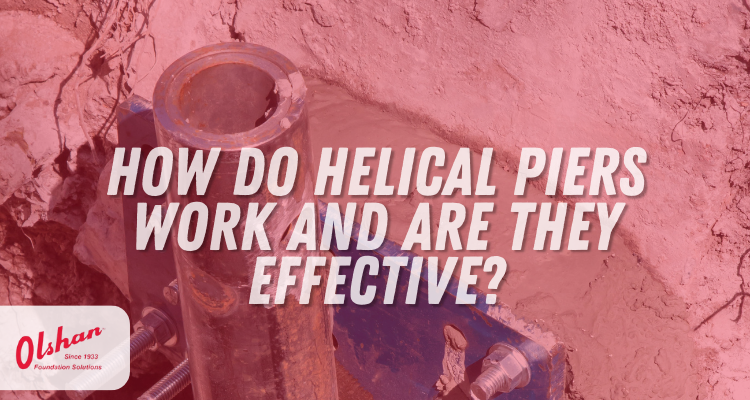- 1-905-452-8193
- Contact Us
- Member Login
- Get Listed Today
- 220,911 members

How Do Helical Piers Work And Are They Effective?
Helical piers, also known as helical piles or screw piles, have become a popular choice for foundation support in construction projects. However, their effectiveness can vary based on soil conditions, and factors like cost. It's important to understand the best ways to use helical piers and when alternatives need to be considered.
Helical Piers And Their Effectiveness in Different Soil Types
The success of using Helical piers for foundation support relies heavily on the type of soil in which they are installed. For new construction projects, Helical piers often outperform bellbottom piers, especially in scenarios like tilt-wall buildings. In some cases, other types of piers installed during construction may not reach sufficient depths, leading to failures. Helicals, on the other hand, can be driven to the necessary depth, ensuring better long-term stabilization, particularly in regions where the soil lacks end-bearing capacity.
The best soil for helical piers includes:
Clay Soils
Loamy Soils
Compacted Soils
Sandy Soils with Some Cohesion
Well-Graded Soils
Helical piers can face challenges is in extremely rocky or hard soils where penetration becomes difficult. Expansive soils that undergo significant volume changes with moisture variations may not be ideal for helical pier installations as well.
How Much Do Helical Piers Cost?
The cost of Helical piers can vary, with an average ranging from $900 to $1300 or more. There are a number of factors that will determine the overall cost to use Helical piers in a construction project including the required depth for proper support and whether the piers need to be ICC (International Code Council) approved. Despite the potential advantages of using Helical piers, such as easier and less labor-intensive installation, and self-testing during driving, they do have the potential to be significantly more costly in loose soil conditions that demand greater depths.
Pros and Cons of Using Helical Piers in Foundation Repairs
When it comes to repairing existing structures, Helical piers can be quite effective, but there are alternative support systems that offer comparable performance at a lower cost. Hiring an experienced foundation installer will play a crucial role in ensuring that whatever support systems are used will be installed at the correct depths for long-term stability. As a company experienced in both Helical and pressed piling systems, Olshan Foundation Repair recognizes the importance of selecting the right foundation support. While Helical piers have their merits, we often suggest using a pressed pile system instead as it is often a more cost-effective solution for consumers in many markets.
Choosing the Right System: The Olshan Approach
It is important to choose the best support system for your particular needs whether you are looking for foundation repair in Houston, TX, or help with a cracked foundation in Memphis, TN the team here at Olshan Foundation Repair can help you decide which support will best suit your home's needs. While Helical piers have their advantages, consumers should be aware of alternative systems, such as concrete-pressed pile systems or our patented hybrid systems that combine steel and concrete to provide better penetration, long-term stability, and an affordable support solution for consumers. Speaking with a foundation repair expert near you can help you choose the best support system your house's foundation will stand on for years to come. (edited)
